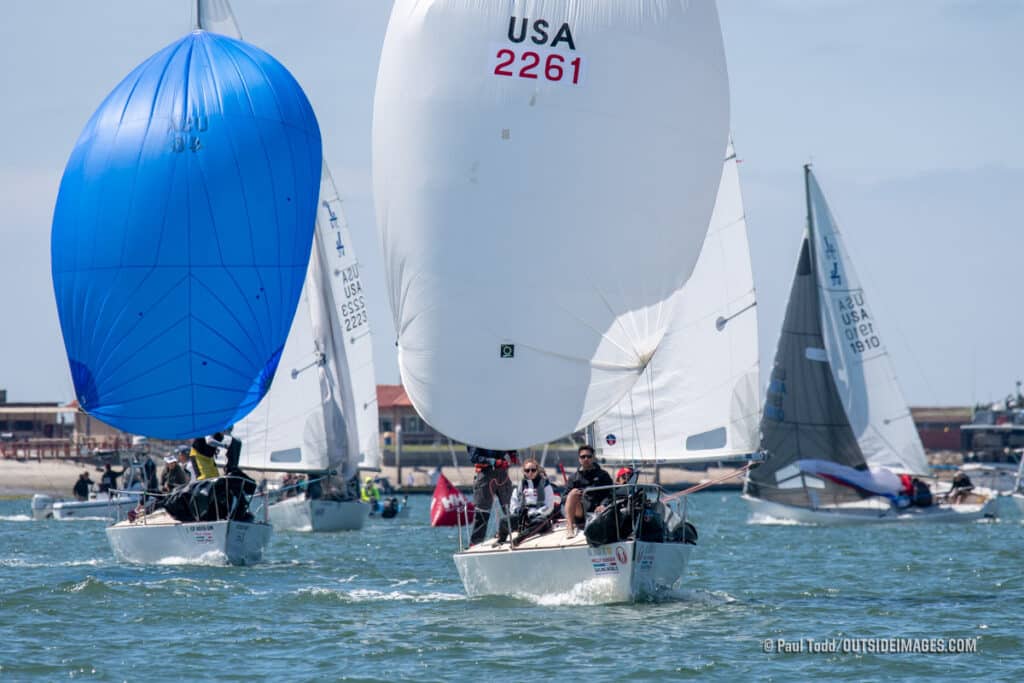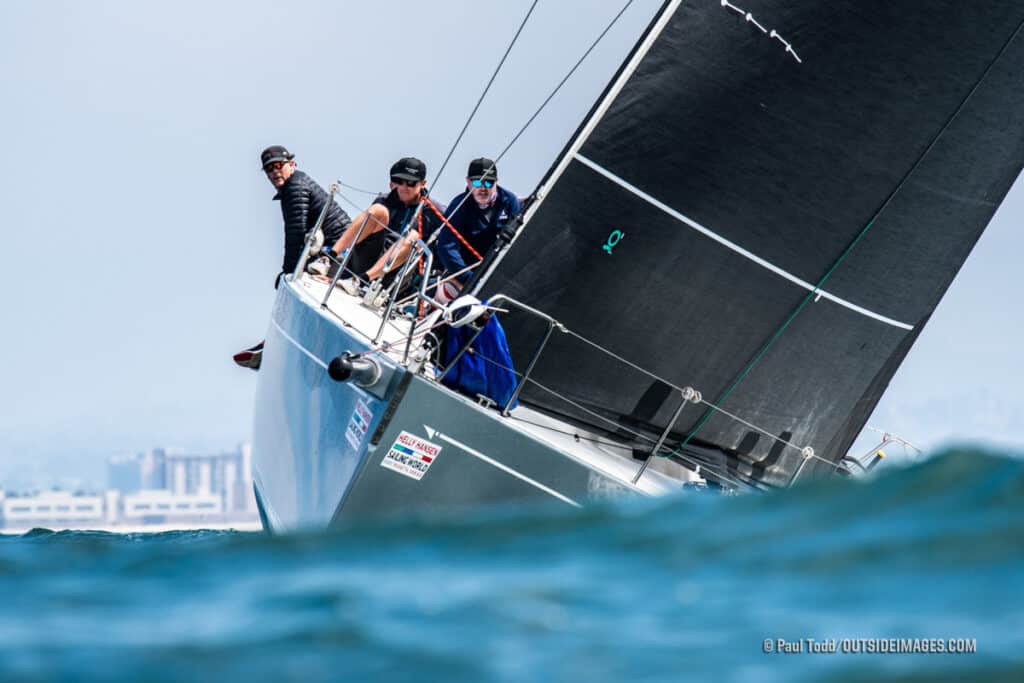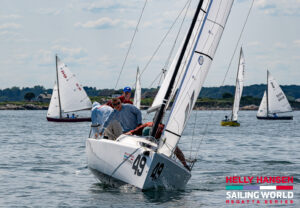
March and April can be our windiest months in San Diego. They can also be quite cold, so bring a warm hat just in case. I’ve laid out some tips for sailing the Ocean and South Bay courses at the Helly Hansen Sailing World Regatta because each presents different conditions and challenges.
South Bay Course
While the same macro weather scenarios play out in South Bay, this racecourse has some added geographic nuances.
180 degrees TWD: The left still works well in these conditions.
270 degrees TWD: The wind is heated as it blows over the Strand on Coronado Island, which seems to make it “jump” and be more unstable than out in the ocean. The result is good puffs and often shears where boats to weather of you will be able to point higher. Typically, these are not persistent shifts; you can wait it out to get the next shift and puff from the other side. That said, in a westerly, the top left of the course can often be more powerful than the right.
If it is a sea breeze day, and the wind begins to shift to the right, coming from the bridge later in the afternoon, you’ll be torn between the great left pressure early in the beat and often strong right pressure toward the end of the beat. In this condition, you must be heads up and paying attention to what’s playing out on the course. If the current is going out, it will be stronger in the channel and may become a factor if the wind goes far enough right.
Ocean Course
When sailing on the ocean course, the conditions and your strategy will vary based on the wind direction. Here are a few common True Wind Directions (TWD) and other variables to consider.

180 degrees TWD: Ahead of a storm, the San Diego area can get strong southerlies this time of year. In this condition, the left typically tends to pay out more often than the right. Be prepared for big waves and adjust your rig tune, trim, and crew weight placement accordingly.
220 to 230 degrees TWD: From this direction, you might experience a local phenomenon called the “Catalina Eddy.” Be sure to tune into the morning weather brief for greater detail if this wind direction is in the forecast. These conditions may break down later in the day and shift west.
250- to 265 degrees TWD: This direction can be one of the most challenging. Often accompanied by gray overcast weather, you’ll see the pressure and shifts roll through the racecourse all day long. Sail for pressure and stay on the lifts all day. One side is not typically stronger than the other.
270 degrees TWD: When the westerly sea breeze begins to fill, the left side of the course often has more pressure, but you need to watch for a slow shift to the right. If you are on an outside course, further away from Point Loma, the left can hang in there a bit longer, and being left of the fleet going right can often be a regatta-winning move. If your course is closer to Point Loma, you’ll notice the increased wind and stronger right shift near the point. Getting up to an early right layline can be critical.
A note on waves when the wind around 270 degrees TWD. When the wind is in this quadrant or shifting a bit further right, the waves on port tack come abeam and make steering challenging. Chasing your telltales in this wave state is slow. Rather than steering up and down each wave, sail inside the jib telltales as the crest of the wave hits the boat, then sail slightly over-pressed on the jib telltales as the trough passes under the boat. This should keep you powered up through the tricky waves.
280-degrees or greater TWD: With this wind direction, you’ll want to head right, especially if the course is closer to shore. Better current is near shore and significant right shifts usually roll out from the airbase.
The current Ocean Course typically runs from north to south, is stronger outside, and lighter toward shore. There can be a reverse eddy very near the shore, but the race committee does not sail us that close to shore. With an ebb tide, you’ll want to watch the current line coming out of the bay (often marked by extra kelp in the water). And speaking of kelp…yes, there’s plenty of it out there. You absolutely need a kelp plan onboard. Kelp sticks are not enough; assign a crew to look for the stuff constantly. Nothing is slower than backing down on a windward beat to remove kelp.









